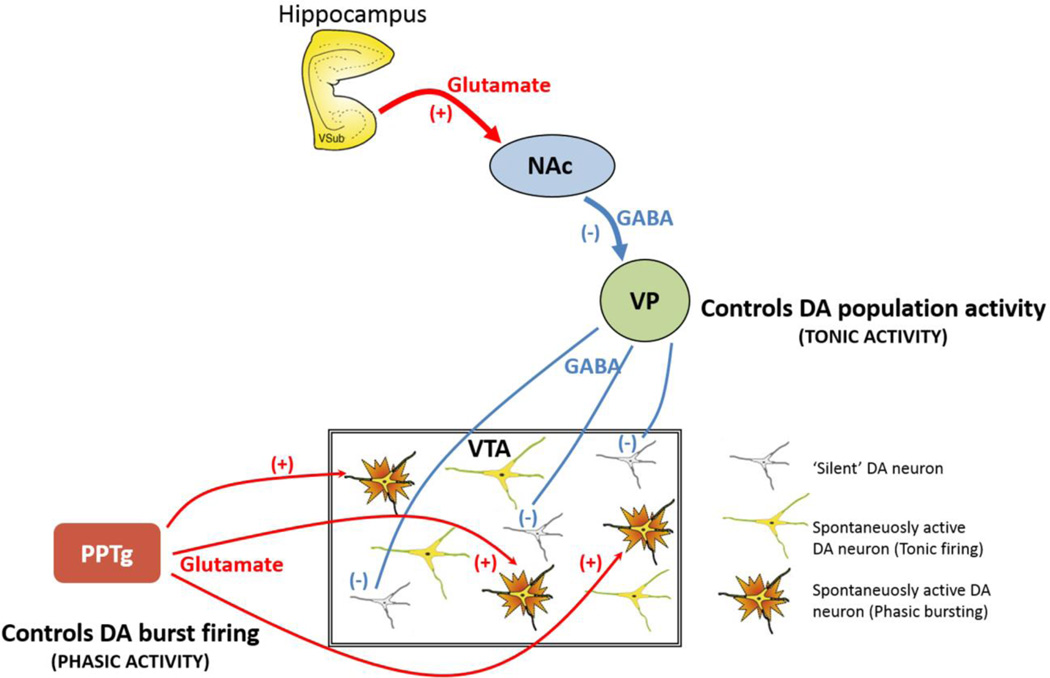Figure 1.
Tonic and phasic dopamine (DA) neuron regulation. DA neurons are known to generate their own activity through a pacemaker conductance. However, a substantial population of DA neurons is not firing spontaneously, being held in a hyperpolarized state by GABA-mediated inhibitory inputs from the ventral pallidum (VP). The VP, in turn, is controlled by a pathway originating in the ventral subiculum (vSub) of the hippocampus. The vSub projects to the nucleus accumbens (NAc), which in turn inhibits the VP. Therefore, when the vSub is excited, it drives NAc inhibition of the VP, releasing the dopamine neurons from inhibition. By contrast, phasic burst firing is dependent on glutamatergic inputs arising from several areas, primary among these being the pedunculopontine tegmentum (PPTg). This afferent system works to regulate activity states within the population of DA neurons, because only neurons that are firing spontaneously can burst fire; hyperpolarized neurons have a magnesium block of the NMDA channel and won’t change state. Therefore the PPTg provides the phasic signal, whereas the VP, by controlling the number of DA neurons firing, determines the tonic gain.

